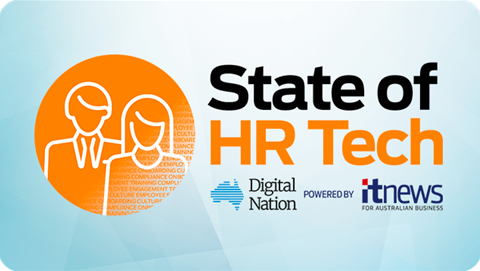As emerging technology reshapes the business landscape, traditional organisational structures will begin to adapt.
What does this mean for the way businesses are structured? What new duties and responsibilities will need to be adapted, leaving the question open as to what will be the next C-suite role?
Anat Hassner, chief strategy and people officer at Uniting explains to Digital Nation how the standard C-suite structure will shift, however, this might not necessarily be driven by technology.
“What we're seeing in the C-suite is more and more expectations of both generalist and deep knowledge.
“You see people who are required to have deep knowledge in a variety of areas but still hold generalist knowledge and leadership knowledge. The requirements for C suite are growing significantly.
Hassner explained this is because there is significant growth in the number of things held by the CEO, such as regulatory concerns, social concerns, ESG, sustainability and AI.
“They need to be knowledgeable of all these things on top of what they previously required which is Operations, finance and people,” Hassner said.
Hassner believes these roles will grow over time “and rather than the CEOs having, chief AI, chief digital, chief people, those roles are going to combine.”
“Ultimately, we will find reporting into the CEO more generalist roles with a deep understanding of how organisations work, a deep ability to connect dots, influence and amazing leadership capability.
“Once you have that, you can hire people underneath with the technical expertise to cover, things like AI, digital sustainability, regulatory compliance, these are important for the CEO, but they need a point person for that.
“That is what we will find, that these roles are becoming more horizontal rather than deep on things like AI,” Hassner said.
Surprisingly, Hassner also said an emphasis on AI will not be the reasoning behind changes.
“I don't think this is driven by technology. Even if we didn't have AI right now, we'd still look for a chief customer officer and that's another reporting line to the CEO.
“We'd still have to figure out how to look after, strategy. That's another reporting line. We'd still have to look after regulations and compliance and ESG and sustainability.”
Hassner said digital is driving the customer experience, leading to more standard C-suite roles.
“These roles need to be focused on experience. Both customer experience and employee experience. What is being driven very strongly by digital is a customisation of experience and ultimately, that's going to also increase the need to have more generic roles like chief marketing and chief customer experience.
“That experience piece is going to evolve to the point where all experience will sit under one chief as well.”
However, Derek Youdale, partner at Hapsicle, believes introducing a chief AI officer (CAIO) is the next step for organisations.
“A chief AI officer is a real reality for a couple of reasons. One is you're already seeing it in industry and coming a lot out of federal governments.
“The US federal government mandated a chief AI officer in each of the bureaus. The government in Dubai has come out and said the same thing. They've just appointed 22 different chief AI officers. The reason being is [AI] is going to be so transformational.”
Youdale said “There's a whole lot of new digital data services” that will be created from AI plus surrounding regulations and compliance standards.
“There is some role around what a chief AI officer could look like. The question is how would it fit into the structure of the organisation.
Youdale added the current chief digital officer (CDO) may shift into a CAIO position as well as similar jobs like CISOs or CTOs potentially absorbed as well.
Dr Tapani Rinta-Kahila, lecturer of Business Information Systems, University of Queensland said there are already some new roles emerging in the workforce targeted to managing AI models.
“Some of the specific roles if we think what's going on right now in major companies, is that they are hiring and creating these positions and some of them are specific to AI, some of them are even very specific to generative AI.
“For instance, Coca-Cola has a senior director of generative AI, and there are many other companies that have this ‘head of generative AI’ or other similar positions.”
He said these positions held the purpose of strategizing generative AI use cases and “making sure it's aligned with work and with the organisation”.
“You've now got these managerial roles that are specialized in overseeing how AI is being developed and deployed,” Rinta-Kahila added.
Following similar views to Youdale, Lydia Clougherty Jones, analyst and senior research director for data, analytics and AI at Gartner said AI has placed a spotlight on organisational structure changes, with AI tech reshaping traditional work configuration and shifting leadership.
Clougherty Jones added this is partly due to “advancements and the pressure to drive so much value” from the organisations.
“It's also because we're not living in a human-only environment anymore and neither are the org structures.
“When you think about an AI leader, is it going to be an AI agent that's a leader? Or what kind of leadership changes are we going to see?
“There is an emerging role of a chief AI officer and a chief AI leader officer or a new role for an AI leader. But the context in which it sits is important.”
“If you take a step back and think about how our boards of directors are changing and we're seeing things like bots on boards. Then how is the C-suite changing?
"We're seeing AI agents as the CIO or the CEO.
“In the marketplaces in which these organisations operate, we’re seeing machines as customers and of course, in the labour market, we're seeing bionic employees.”
“When you think about, are we going to have a new AI role, a new AI leadership role it's important to think about, not only the why, but also what's the context into which they're stepping.”
Clougherty Jones said with the changes to the organisational structure pushing to drive as much value as possible while adapting to changes, “without a discussion of who's going to lead it”.
“Then we've seen the lines of business looking up to C-suites and boards and saying we need resources. We need more skilled labour, we need more collaboration across our roles
“The pressure coming down and the pressure coming up is what's creating that new AI role in the midst of having AI agents on the board or having a mandatory AI expert on a board of directors, which we're seeing in some organisations.”
Also noted by Youdale, Clougherty Jones said the US government has already signed an executive order at the end of 2023, mandating chief AI officers across federal agencies.
“What we saw there was less of a standalone position,” Clougherty Jones said.
“What we see in enterprises though, is a little bit more focused on the standalone role or a hybrid role that's very much related to data and analytics,”
This is “because the most important thing about the AI leader is that they can synthesize, not only all the multidisciplinary challenges across the organisation but that they have both business acumen as well as technology skills”.
Clougherty Jones further explained this is because “they're traversing the IT environment and the business environment to drive the biggest return on investment.”
Matt Sek, VP of Airwallex ANZ told Digital Nation he believes a future C-suite role will be a chief innovation officer.
“We now live in a world of AI and digital enhancement, which has grown considerably in the past two years.
"Due to the increase in productivity that AI has brought, there will be a period of adoption that businesses will go through in the next 5-10 years pushing what we know now into a new age.
"However, businesses will need to carefully plan and experiment with the adoption of AI and digital across various functions to boost efficiency, necessitating a distinct role which is the chief innovation officer to take advantage of the potential upside from innovation whilst minimising disruptions to the core business," Sek said.
Sek added "great benefits" have been found from the innovation work at Airwallex leading to new products, such as its investment feature Yield.
“There is no doubt that as this drive for innovative thinking continues, a clear focus is essential to produce successful outcomes for our customers,” Sek said.


_(20).jpg&h=140&w=231&c=1&s=0)








 iTnews Executive Retreat - Security Leaders Edition
iTnews Executive Retreat - Security Leaders Edition












_(1).jpg&h=140&w=231&c=1&s=0)



